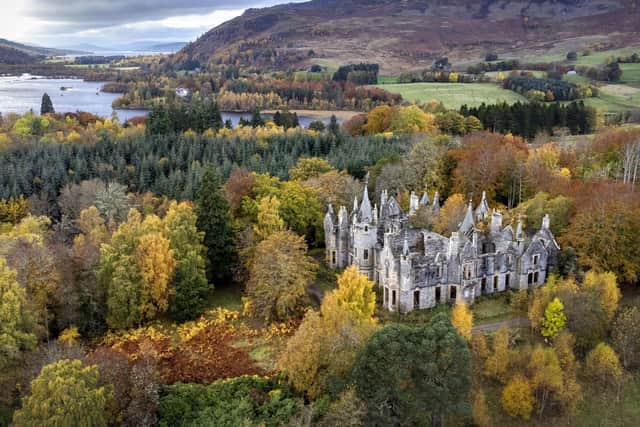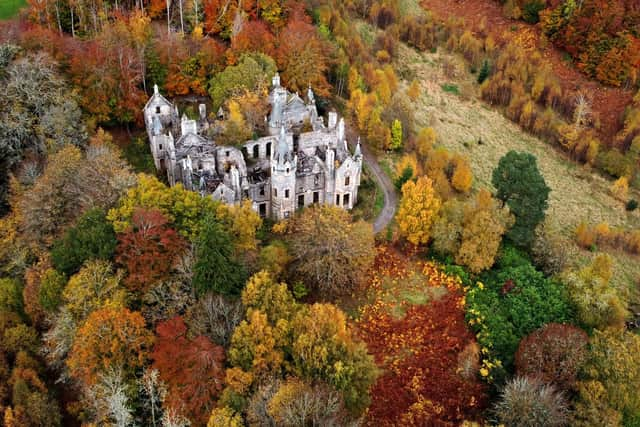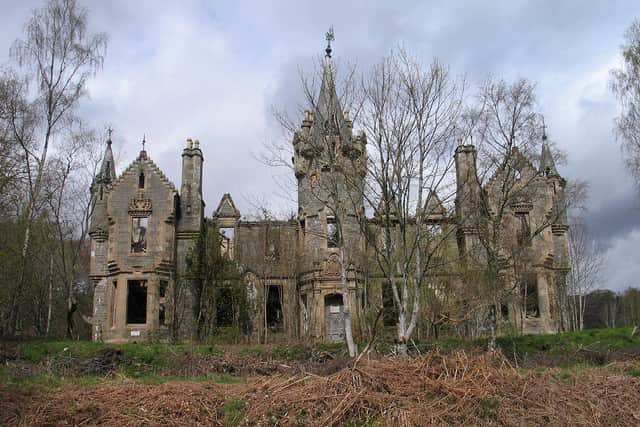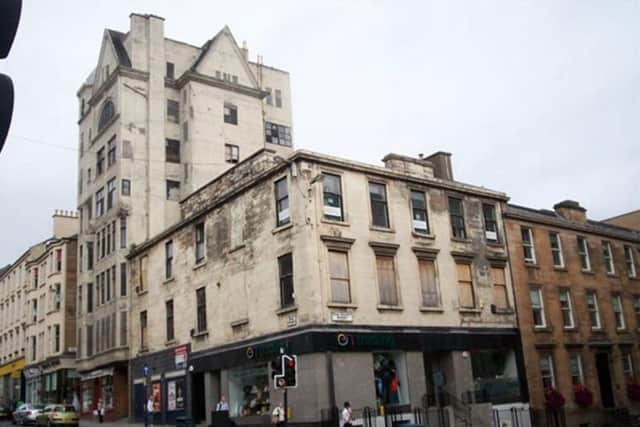Highlands castle once owned by Scottish lager giant at risk of collapse
A Highland castle once owned by the man who created Scotland’s most popular lager is now on a list of historic properties at risk of collapse.
The once mighty Dunalastair Castle, near Pitlochry, has been added to the Buildings at Risk Register.
Advertisement
Hide AdAdvertisement
Hide AdPast owners include Hugh Tennent, who took over the Wellpark Brewery in 1884 and quickly began to create Tennent’s Lager after being inspired by German brewing. Mr Tennent’s father and grandfather were instrumental in the earlier growth of the business and both died when Hugh was just one year old.


Once the epitome of Scottish country grandeur, Dunalastair was built in the mid 19th century and suited those with a love for hunting grouse, stag and salmon. With more than 30 bedrooms and six public rooms, its owners over time have enjoyed views from the house over the Valley of the Tummel, Loch Rannoch, Glencoe to the west and Schiehallion to the south.
But with such grand houses falling out of practical favour following the First World War, the building has long been roofless, derelict and at the mercy of nature, which is slowly reclaiming the past residence, which was designed by the same architects who built the grand Atholl Palace Hotel in Pitlochry.
Dunalastair is one of five Scottish buildings added to the Buildings at Risk register today. The others are Glasgow’s Tureen Street School in Calton, Central Police Courts in St Andrew’s Square and Lion Chambers in Hope Street, Glasgow. Letham Grange House in Angus has also been placed on the list.


Liz Fuller, SAVE's Buildings at Risk officer, said the structures were a “powerful link” to Scotland’s past, with the register a national platform for raising awareness of neglected historic buildings.
Ms Fuller said: "If you want to be transported to different locations and different moments in our history, dipping into this list of buildings we are adding to our Buildings at Risk register is the ticket that you need.
"While the variety of fascinating structures is inspiring, it is shocking that they are at risk at all. The new entries serve as an urgent reminder that these historic buildings are a resource which, if restored and reused, have the potential to deliver huge benefits to their communities through their character, shared history and their return to use."


Dunalastair has been allowed to decay since at least the 1960s when large amounts of lead were stripped from the roof. By that time, the pile had been through several owners, a bad fire and two World Wars. The house was barely used after the First World War given the loss of staff required to run such a large house, with Dunalastair requisitioned and used as a school for Polish boys during the Second World War. It was around this time that a fire badly damaged the house, with a painting by John Everett Millais among items destroyed.
Advertisement
Hide AdAdvertisement
Hide AdHugh Tennent only held Dunalastair for eight years given his death at home in Glasgow’s West End in 1890, when he was just 40 years old. He died from natural causes and left a fortune of some £25 million at today’s values.
He had been handed the keys to the family business business aged 21 – with a banquet held in Glasgow’s City Chambers and celebration’s held at Dunalastair to mark his ‘coming of age’ – with the country pile bought around this time from General Sir John Macdonald of Dalchosnie. The general was a leading figure in the British Army who built the house in 1859 after demolishing an earlier pile purchased from George Duncan Robertson, 18th Chief of Clan Donnachaidh.
Sir John also built much of the village of Kinloch Rannoch, including the Episcopal Church in the square and the MacDonald Arms Hotel, which is now called the Dunalastair Hotel Suite and is no longer part of the wider estate.


Following the death of Hugh Tennent, the estate was bought by James Clark Bunten, chairman of the Caledonian Railway Company and the owner of a foundry in Anderston. He is the great-grandfather of existing owner Ian Cameron de Sales La Terrière, who lives on the estate with his wife Rose.
The contents of the house were sold off in the 1950s by the Cameron de Sales La Terrière family, with the iron lock and key of Dunalastair hotly contested between an American buyer and Mr T Atholl Robertson, an antiquarian from Crieff, who purchased the lot. Other items to pass through the auction included a pair of old metal Chinese candle lanterns, 19 Champagne classes and a French brass globe mantel clock
A statement on the Dunalastair website said the cost of restoring the castle “would be very great indeed”.
It said: "Various ideas have been put forward for restoring it, but the cost would be very great indeed, and nothing has so far come of any of them.”
The Lion Chambers is Glasgow is a Grade A listed building that has been standing empty since 2010. It was originally commissioned by William George Black, a prominent lawyer, writer and member of the Glasgow Art Club who asked that artist’s studios be incorporated into the top floors of the build. Completed in 1907, its distinctive tower is made from reinforced concrete and is one of the earliest structures in Britain to use the material.
Advertisement
Hide AdAdvertisement
Hide AdThe Central Police Courts in St Andrew’s Square handled the city’s criminal class from 1906, but the building has been vacant since 2008. Sold in 2016, hopes to open a hotel at the site floundered with proposals now on the table to turn the property into flats.
Tureen Street School, designed by Glaswegian architect John Honey and built in 1875, has been on the market since 2017, with no buyer yet found. Letham Grange in Angus was a hotel at the centre of two golf courses, with the property closing in 2011 after years of financial problems.
Comments
Want to join the conversation? Please or to comment on this article.